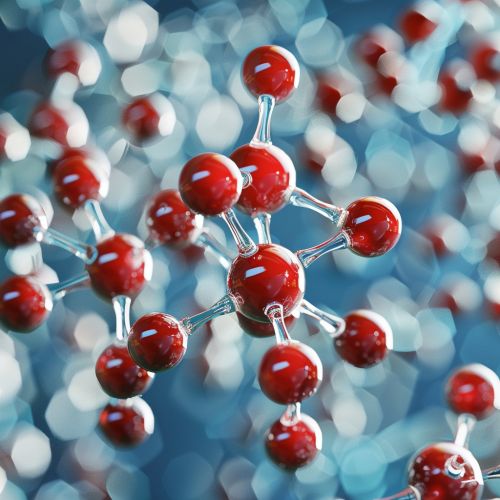Thienopyridine: Difference between revisions
(Created page with "== Overview == Thienopyridines are a class of medicinal drugs that are used as antiplatelet agents to decrease the risk of heart attacks and strokes. They work by inhibiting the P2Y12 receptor, a type of adenosine diphosphate (ADP) receptor on platelet cells in the blood. This inhibition prevents platelets from aggregating and forming blood clots, a common...") |
No edit summary |
||
| Line 2: | Line 2: | ||
Thienopyridines are a class of [[Drug|medicinal drugs]] that are used as [[Antiplatelet drug|antiplatelet agents]] to decrease the risk of [[Myocardial infarction|heart attacks]] and [[Stroke|strokes]]. They work by inhibiting the [[P2Y12|P2Y12 receptor]], a type of [[Adenosine diphosphate|adenosine diphosphate (ADP) receptor]] on [[Platelet|platelet]] cells in the blood. This inhibition prevents platelets from aggregating and forming blood clots, a common cause of heart attacks and strokes. | Thienopyridines are a class of [[Drug|medicinal drugs]] that are used as [[Antiplatelet drug|antiplatelet agents]] to decrease the risk of [[Myocardial infarction|heart attacks]] and [[Stroke|strokes]]. They work by inhibiting the [[P2Y12|P2Y12 receptor]], a type of [[Adenosine diphosphate|adenosine diphosphate (ADP) receptor]] on [[Platelet|platelet]] cells in the blood. This inhibition prevents platelets from aggregating and forming blood clots, a common cause of heart attacks and strokes. | ||
[[Image:Detail-79015.jpg|thumb|center|A close-up view of thienopyridine molecules.|class=only_on_mobile]] | |||
[[Image:Detail-79016.jpg|thumb|center|A close-up view of thienopyridine molecules.|class=only_on_desktop]] | |||
== History == | == History == | ||
Latest revision as of 14:53, 16 May 2024
Overview
Thienopyridines are a class of medicinal drugs that are used as antiplatelet agents to decrease the risk of heart attacks and strokes. They work by inhibiting the P2Y12 receptor, a type of adenosine diphosphate (ADP) receptor on platelet cells in the blood. This inhibition prevents platelets from aggregating and forming blood clots, a common cause of heart attacks and strokes.


History
The development of thienopyridine drugs began in the late 20th century, with the first drug of this class, ticlopidine, being approved for medical use in 1991. Ticlopidine was later superseded by clopidogrel in 1997 due to its better safety profile. The most recent thienopyridine drug to be approved is prasugrel, which was introduced in 2009.
Mechanism of Action
Thienopyridines are prodrugs, meaning they are inactive in their ingested form and must be metabolized in the body to become active. They are metabolized in the liver by cytochrome P450 enzymes, specifically CYP2C19, to produce active metabolites. These metabolites irreversibly bind to the P2Y12 receptor on platelets, inhibiting the receptor and preventing platelet aggregation.
Clinical Use
Thienopyridines are primarily used in the prevention of thrombotic events in patients with coronary artery disease, peripheral artery disease, and recent history of stroke or transient ischemic attack. They are often used in combination with aspirin for dual antiplatelet therapy.
Side Effects
The most common side effects of thienopyridines include bleeding, bruising, and rash. More serious side effects can include severe bleeding, thrombotic thrombocytopenic purpura, and neutropenia.
Future Developments
Research is ongoing into the development of new thienopyridine drugs with improved efficacy and safety profiles. There is also interest in the potential use of thienopyridines in other conditions, such as cancer, due to their effects on platelet function.
